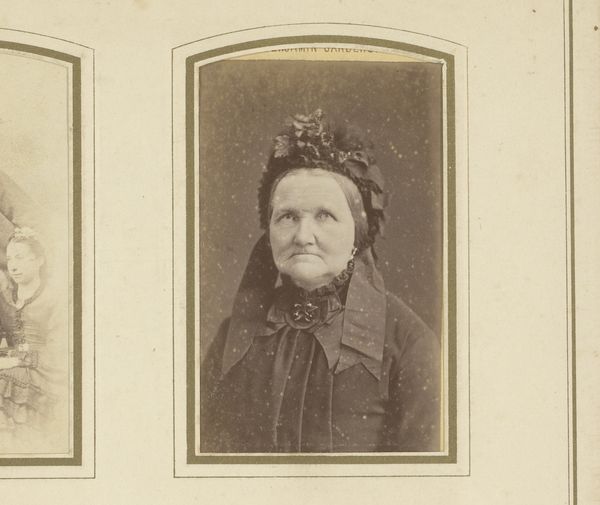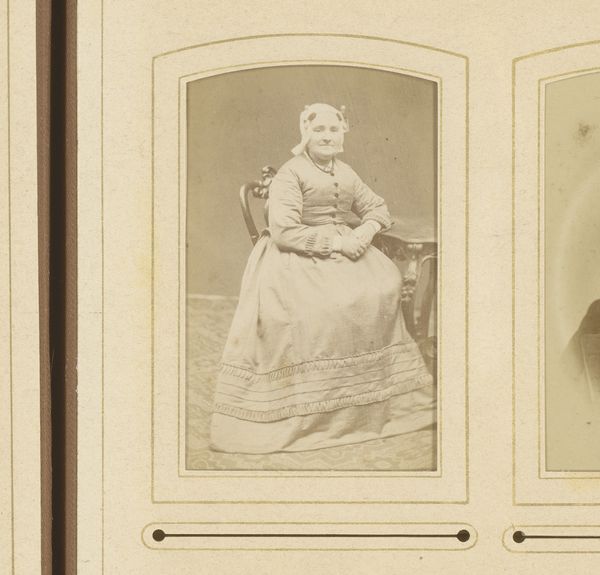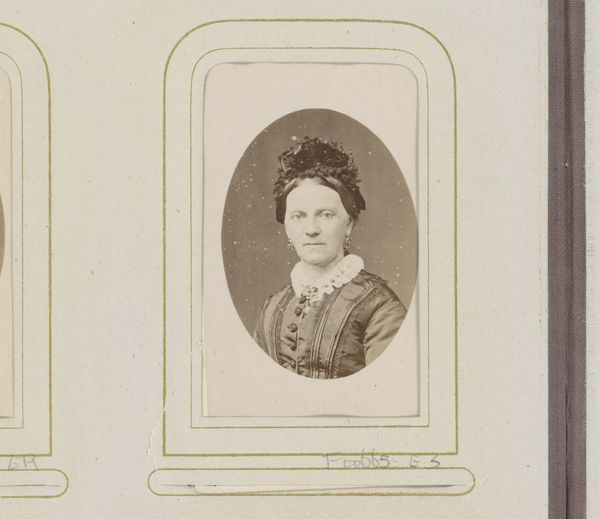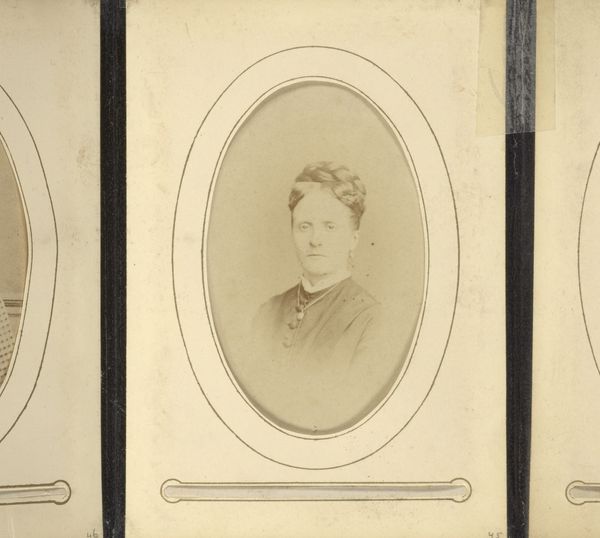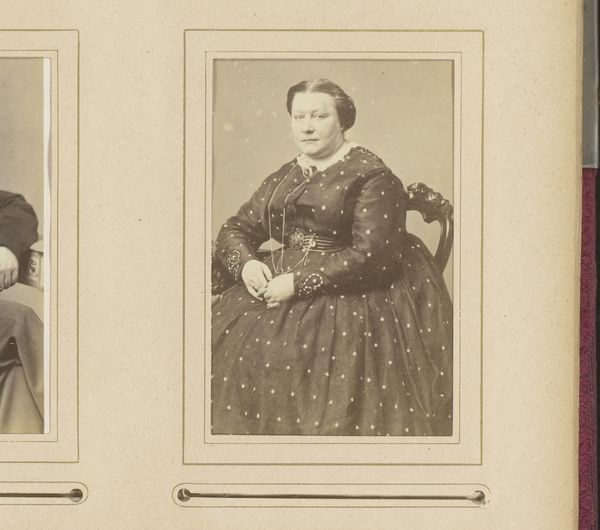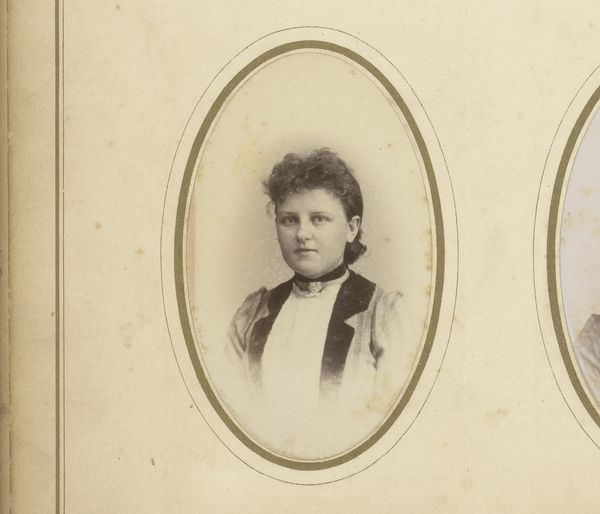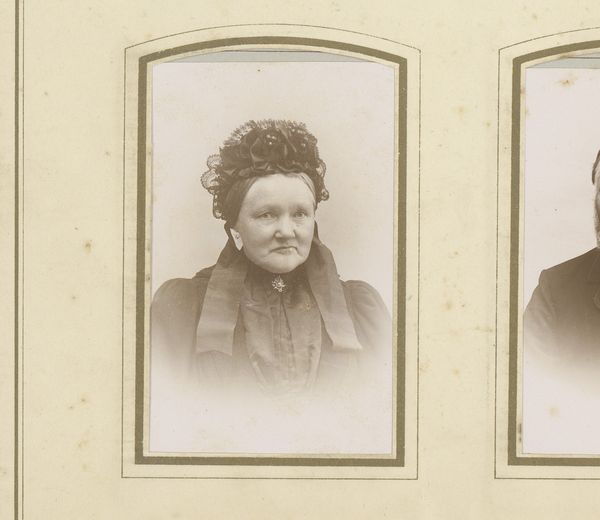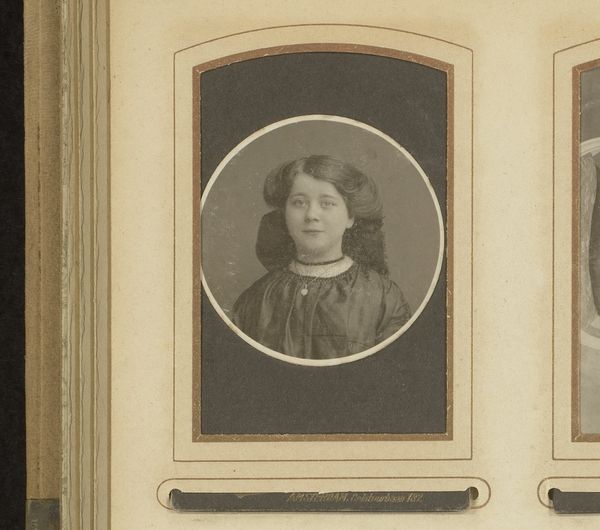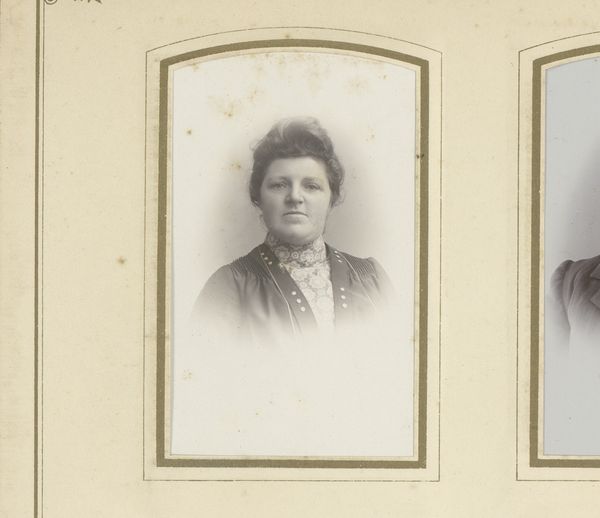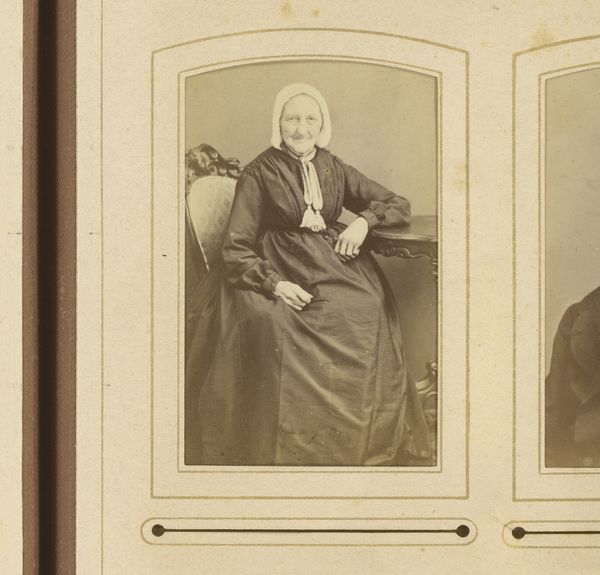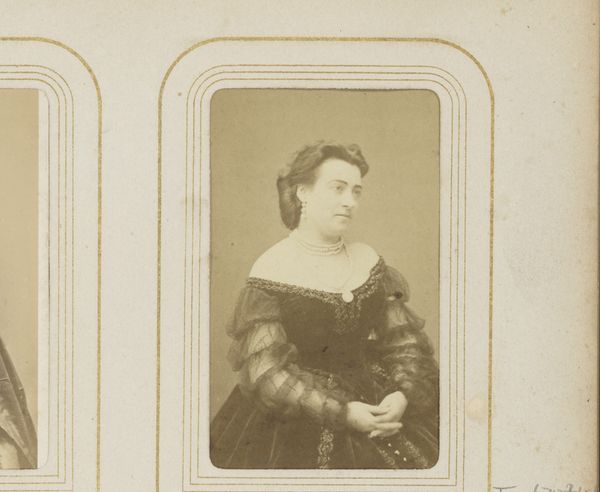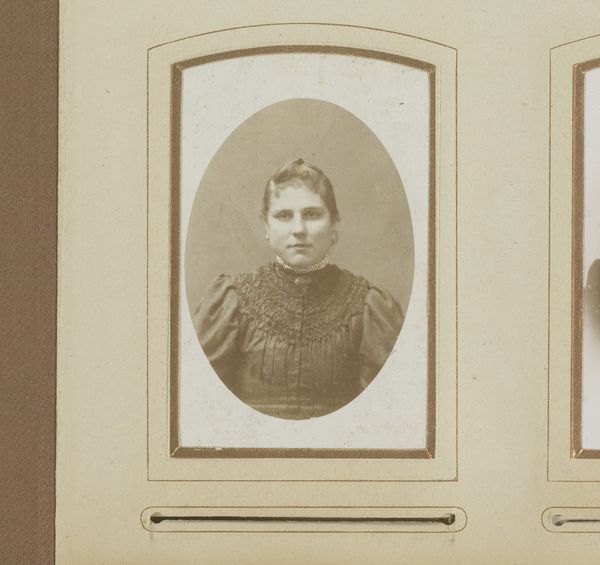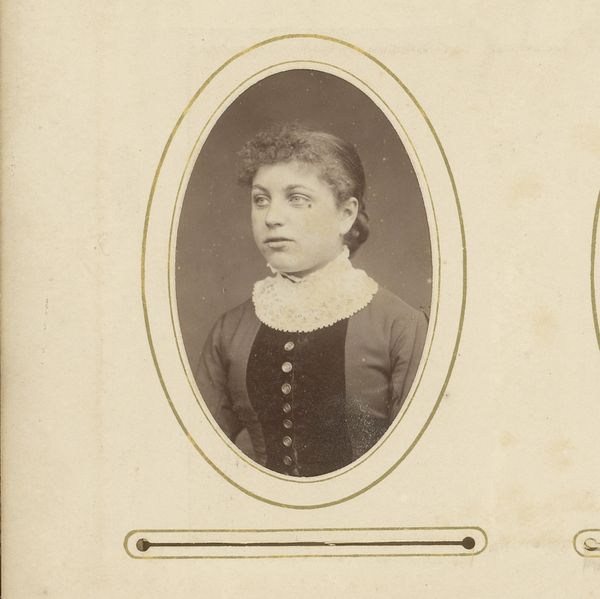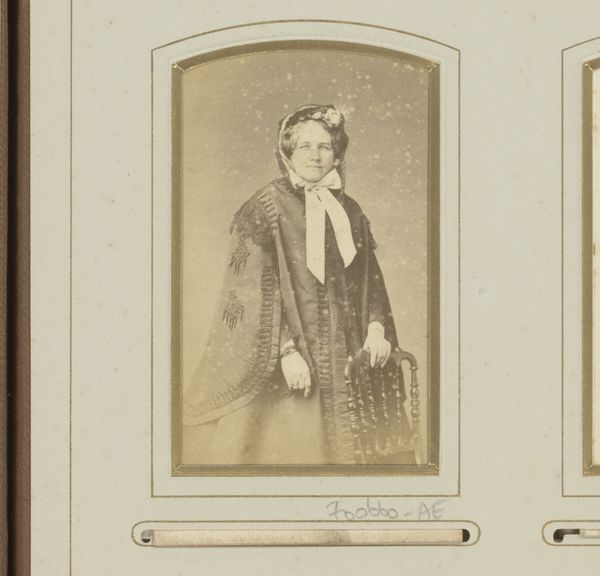
Portret van een oude vrouw met muts met linten 1873 - 1900
0:00
0:00
friedrichjuliusvonkolkow
Rijksmuseum
photography, gelatin-silver-print
#
portrait
#
photography
#
historical photography
#
gelatin-silver-print
#
realism
Dimensions: height 81 mm, width 52 mm
Copyright: Rijks Museum: Open Domain
Curator: Before us is a gelatin silver print from between 1873 and 1900, “Portret van een oude vrouw met muts met linten”, attributed to Friedrich Julius von Kolkow, held in the collection of the Rijksmuseum. Editor: It’s… interesting. There’s something immediately striking about the contrast. The soft focus creates an almost dreamlike quality, juxtaposed against the subject’s rather stern expression. Curator: Consider the labor embedded here. From the photographer carefully manipulating light and chemicals, to the sitter who probably commissioned the piece, but the gelatin silver process became a widely accessible medium at the time. It speaks volumes about social changes regarding image making, and the growing access regular folk got in terms of immortalizing themselves for their loved ones. Editor: Yes, but let's consider what Von Kolkow achieved formally. Look at how the soft, almost blurry edges draw the eye inexorably to the woman's face. And the lines of her bonnet; how they frame her features, accentuating the depth of her gaze. Her look really locks the viewer. Curator: And how might that "locking in" be affected by socio-economic factors? Access to portraiture was often a sign of privilege. Consider also, the craftsmanship implied within the bonnets’ ribbons and construction; someone has labored to create the clothing adorning this subject. These weren't mass produced goods at that time! Editor: Point taken. And that materiality extends to the gelatin silver itself; the subtle tonal gradations. The artist is not only capturing an image but engaging with the very properties of his materials to evoke a certain mood and reaction from the viewer. The interplay of light and shadow lends a sense of depth, almost a tactile quality. Curator: Photography democratized representation but simultaneously embedded the visual language of social hierarchies through objects such as fancy bonnets or certain garments; it can provide insights into both access and ongoing societal class markers of the time. It prompts us to reflect on who gets represented, how, and by whom. Editor: It really makes one think about mortality and how our interpretations of an artwork continue evolving through new analytical lens. Curator: Absolutely, understanding both material circumstances and formal composition provides richer meanings and greater insight!
Comments
No comments
Be the first to comment and join the conversation on the ultimate creative platform.
